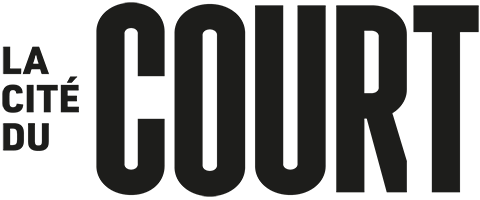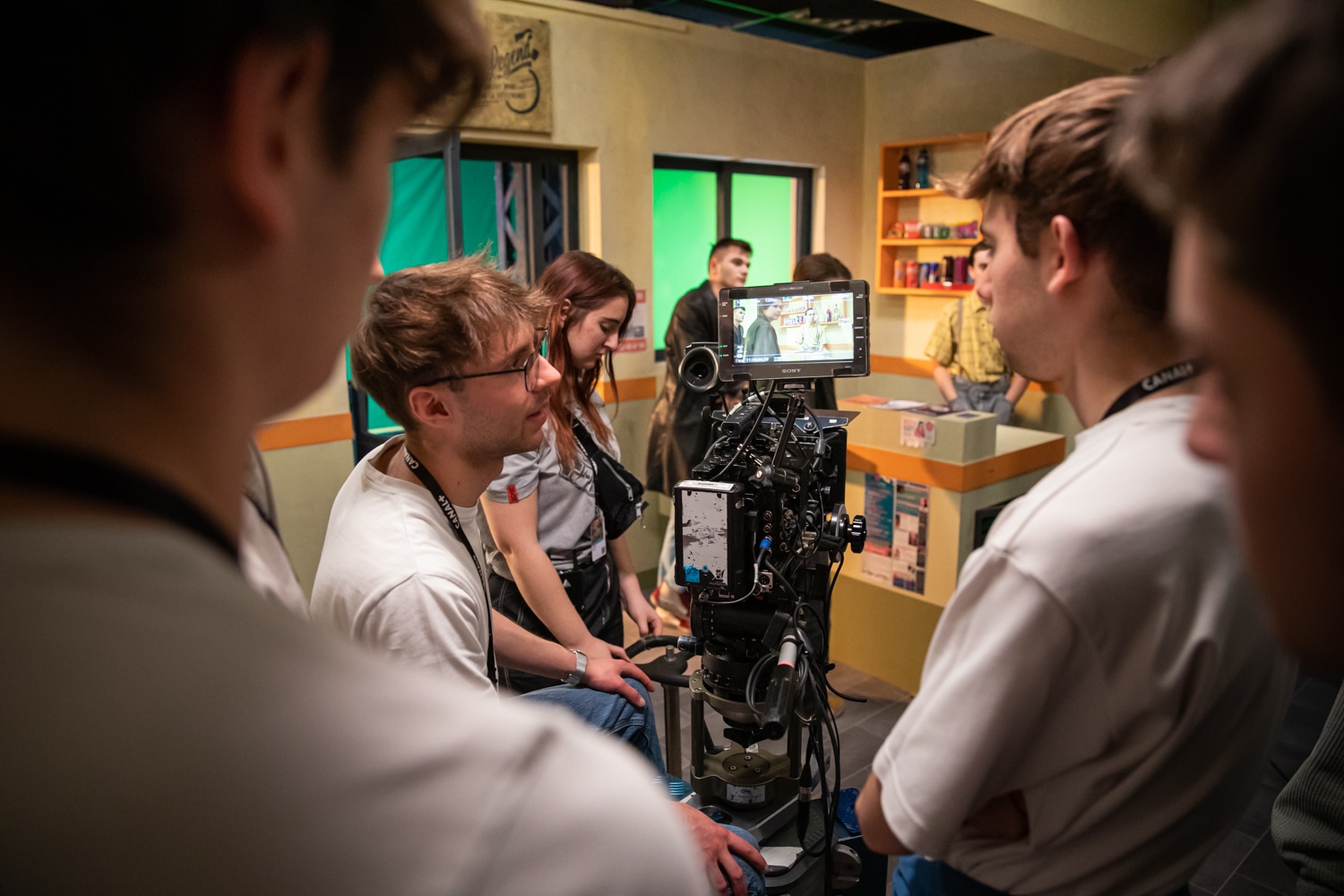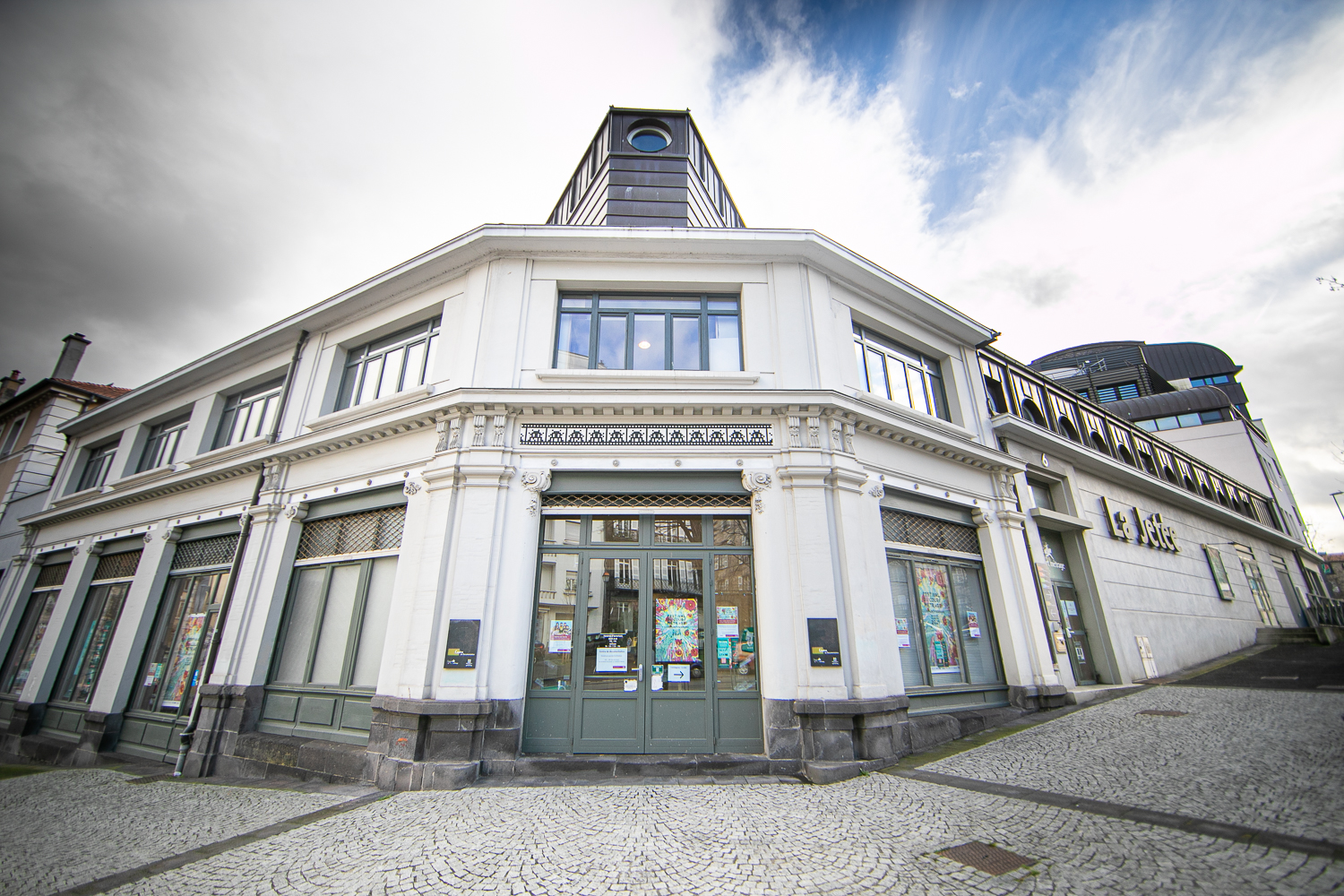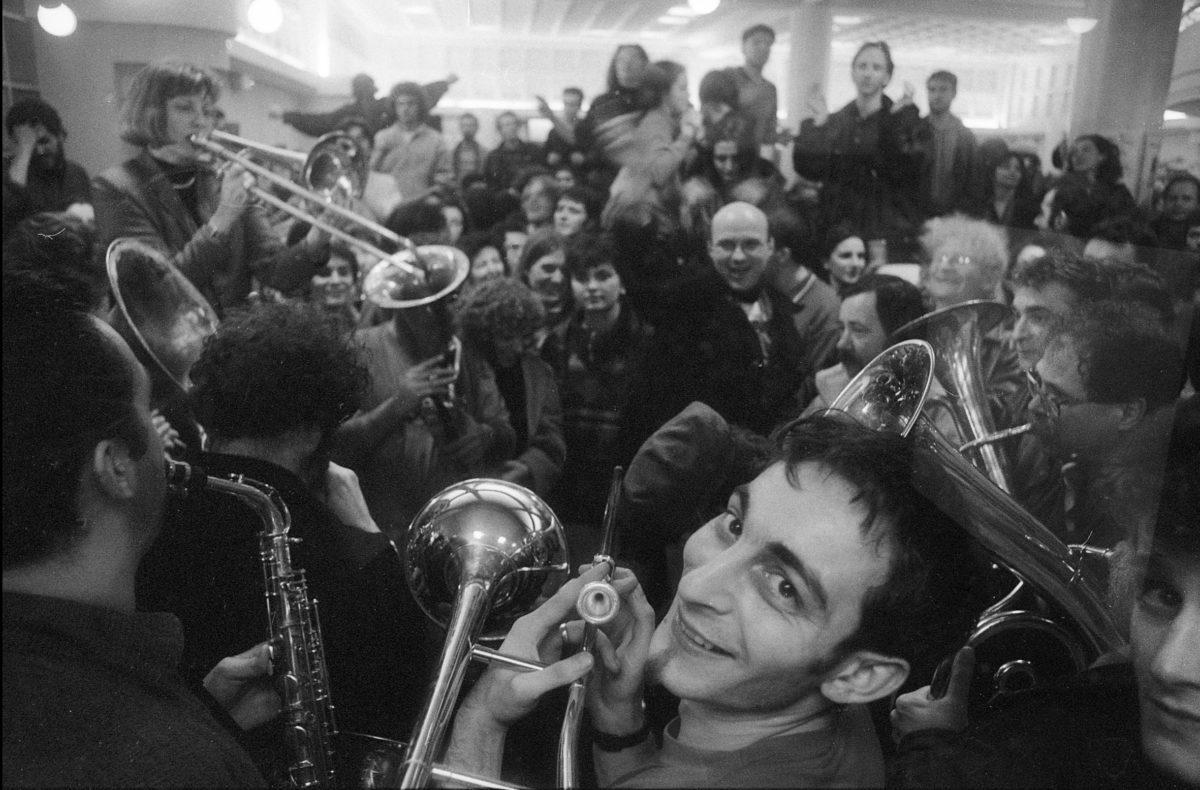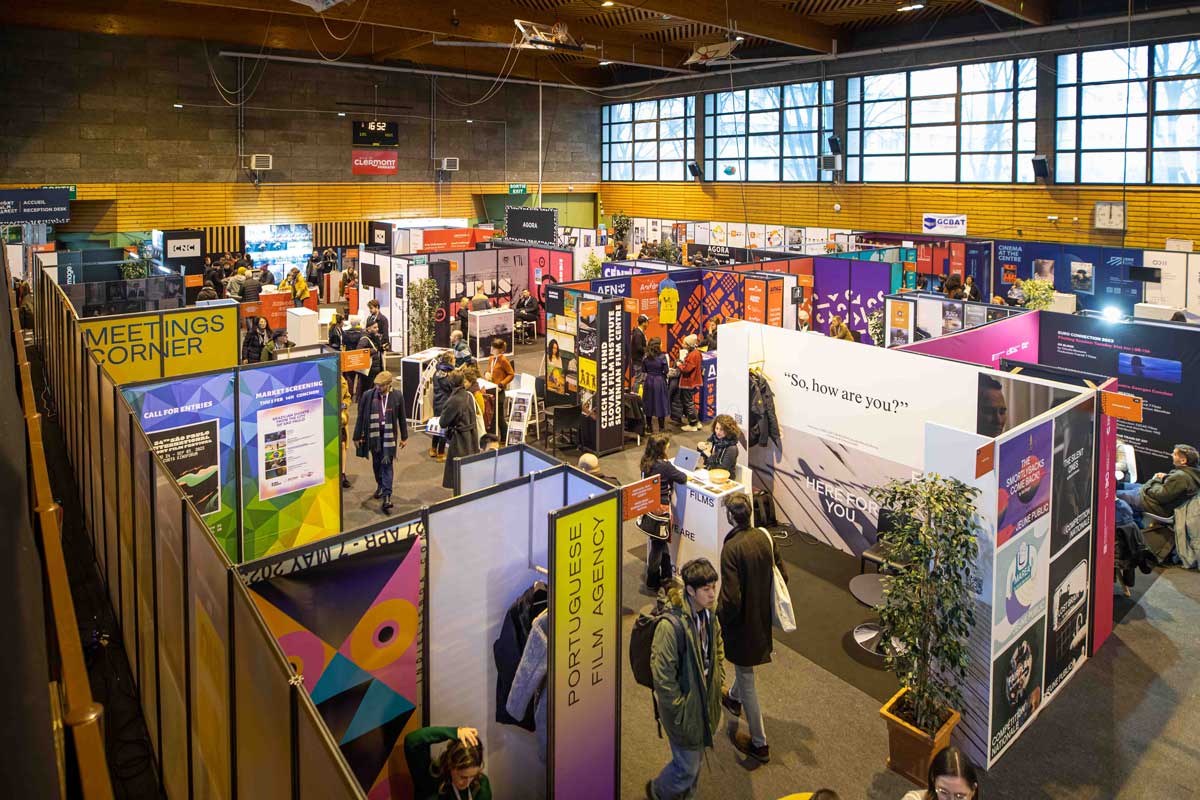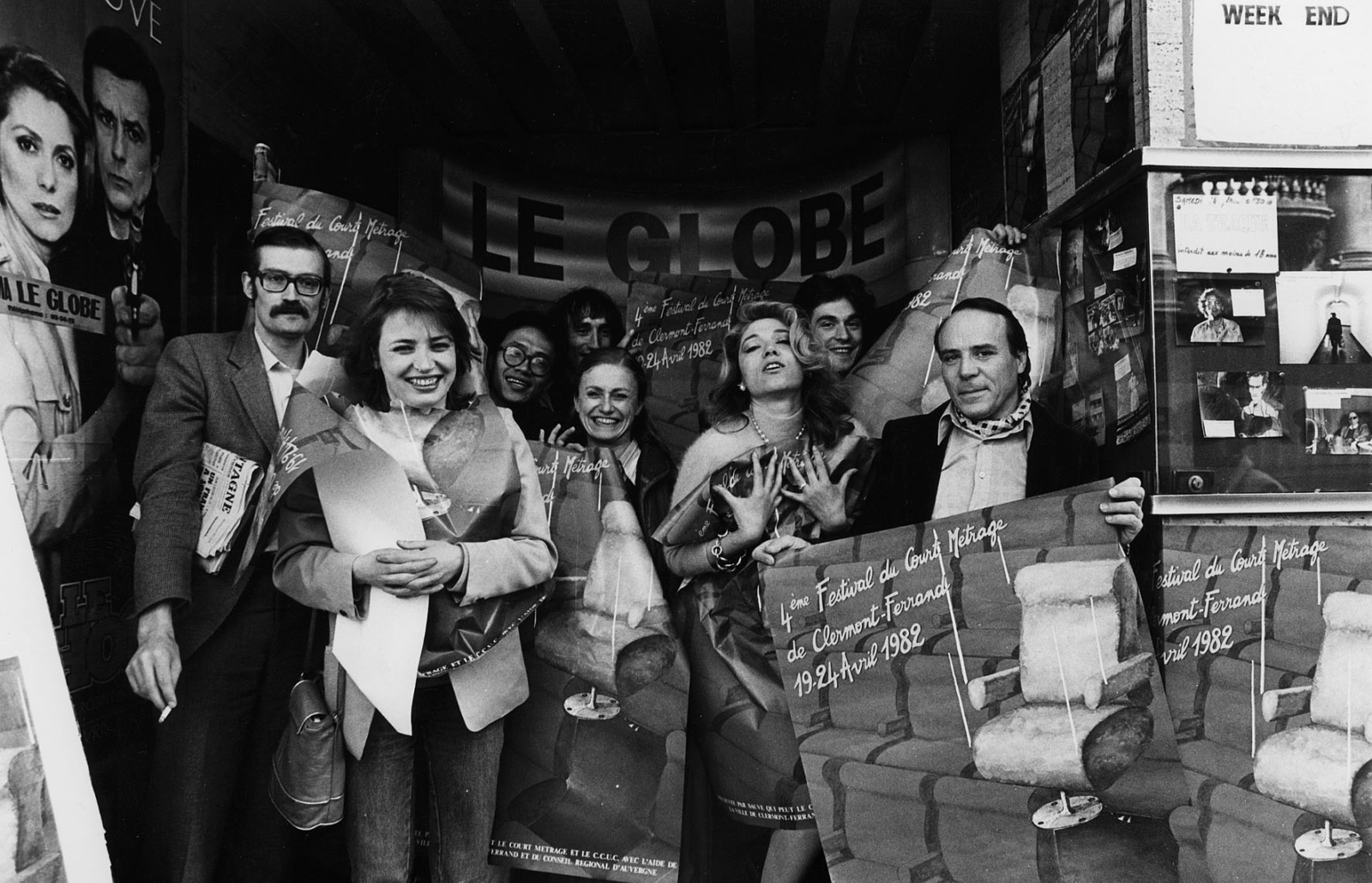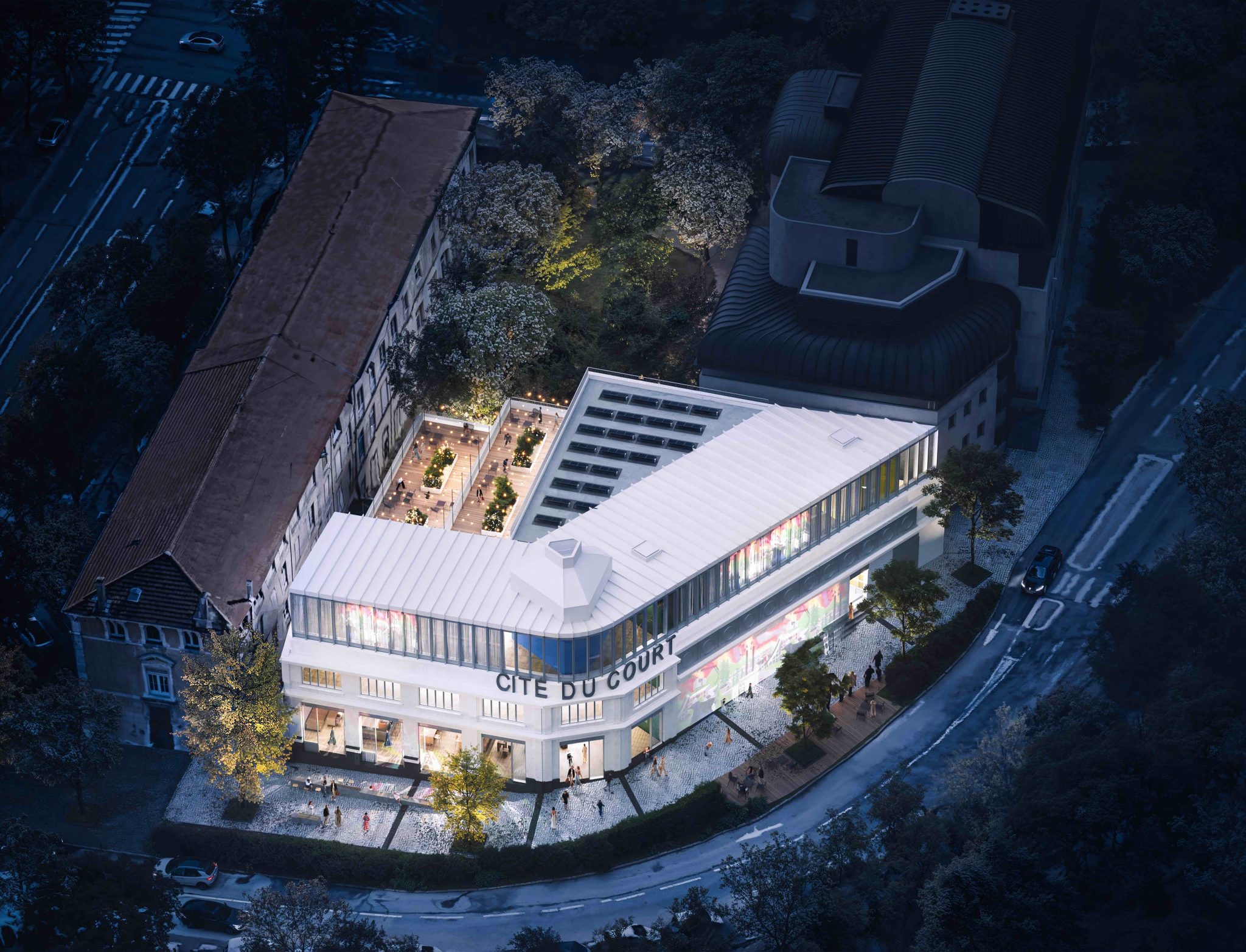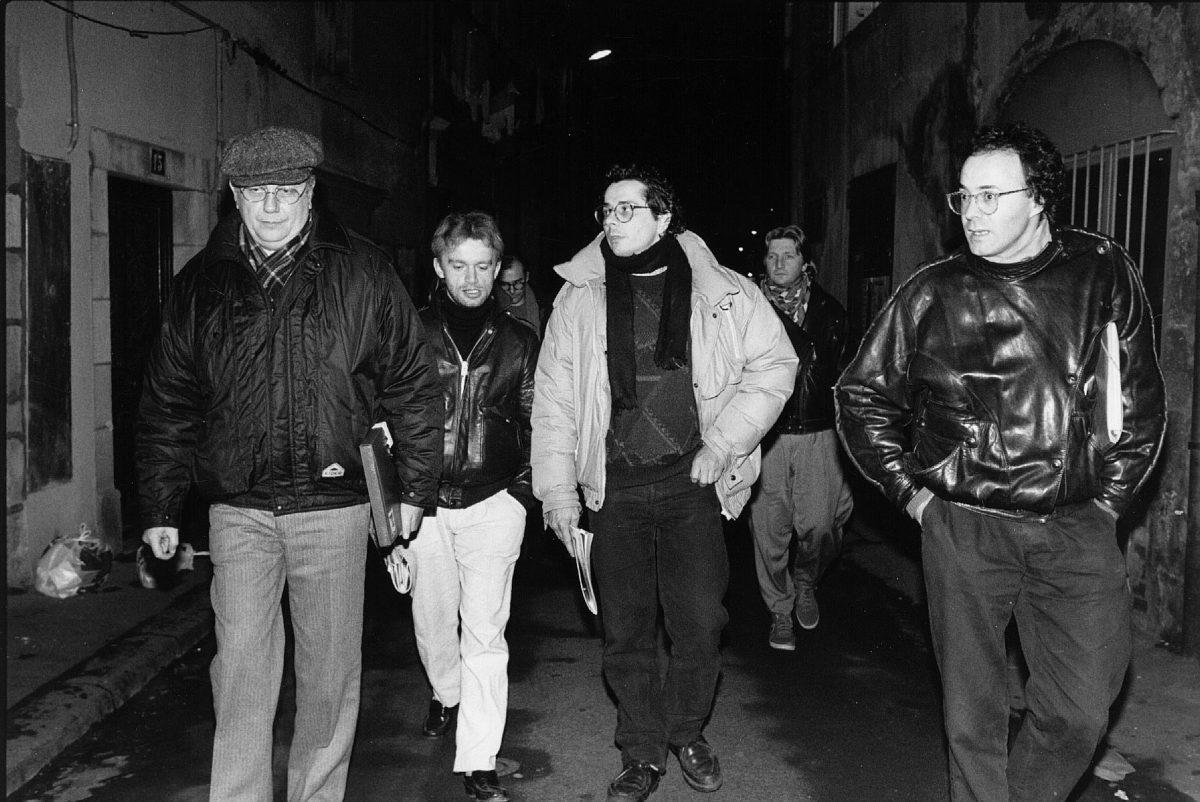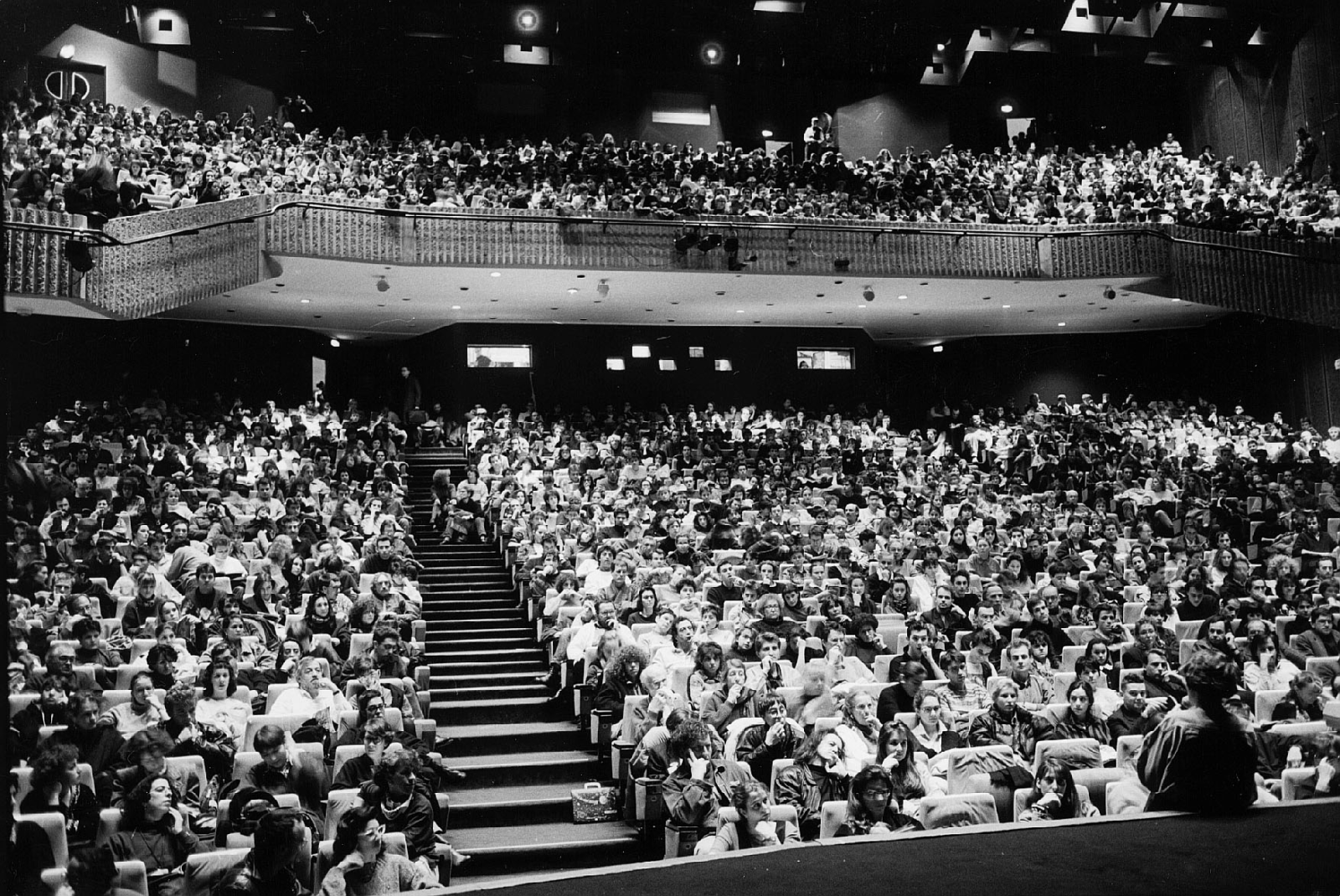The Clermont-Ferrand Short Film Festival is today the largest cinematic event in the world dedicated to short films. In terms of audience and professional presence, it is the second-largest film festival in France after Cannes. It is at the heart of numerous activities and missions carried out year-round from La Jetée by the collective Sauve qui peut le court métrage. The association, under French law 1901, employs 21 permanent staff, all based in Auvergne, where a dynamic film and image community has developed.
The 2025 edition set a record audience with over 173,000 attendees and welcomed more than 4,100 professionals.
2004
Creation of the Atelier, a temporary film school, in collaboration with the National Superior School of Architecture of Clermont-Ferrand. This initiative welcomes several schools training for careers in visual media, operating Monday to Friday during the Festival.
A true place of knowledge-sharing, students from the various schools are invited to present their creations and skills to visitors, particularly schoolchildren, emphasizing moments of exchange and discovery. Between 2016 and 2019, l’Atelier moved to the Clermont-Ferrand Graduate School of Business before settling at the Blaise-Pascal Center, attracting over 2,000 visitors across around fifteen participating institutions.
May 2000
The association moves into its new premises. In the heart of Clermont-Ferrand, La Jetée, named in homage to Chris Marker’s film, houses the offices of Sauve qui peut le court métrage, the Auvergne Film Commission, and a Resource Center that is unique in the world for its collection dedicated to short films.
1995
Some 100,000 spectators attend the Festival to celebrate a century of cinema, during an edition that once again showcases the vitality and creativity of generations of filmmakers.
1986
In response to the ever-growing interest of professionals in the event, the first Short Film Market is organized, with the support of long-standing institutional partners, later joined by the European Union. This commitment to positioning short films within the economic sector has only strengthened over time, as the number of national and international broadcasters (the main buyers), as well as national and international festivals attending the Clermont-Ferrand Short Film Market to make their selections, and various organizations interested in short films, has continued to grow steadily.
1982
The event thus becomes competitive. Alongside the National Competition, International short film programs are presented to the public, featuring films grouped by theme, genre, country, or as tributes to major figures in short filmmaking. At this stage, the organisation relies primarily on the passion of volunteers.
February 1982: the festival’s first jury (Gilles Colpart, Dominique Laffin, Lam Lê, Catherine Almeras, Myriam Mézières, Rémi Laurent, Jean-Pierre Fontana)
Looking toward 2029
The Clermont-Ferrand International Short Film Festival now requires a workspace befitting its reputation. This will become a reality in 2029, for the festival’s 50th anniversary, with the opening of the Cité du Court, which will make Clermont-Ferrand the capital of cinema, with the support of its partners.
This 2,000 m² site will physically include a renovated screening room, a larger documentation center for the public, new mediation and work spaces designed for image education and professional training, a shooting stage for educational and experimental purposes for filmmakers, more spacious offices for the organizing team, and finally a café where everyone can meet in a friendly atmosphere.
Construction begins in the first quarter of 2027.
2008
Having welcomed over two million spectators, thousands of films, hundreds of filmmakers, eleven ministers of culture, and eight directors of the French National Center for Cinema and the Moving Image (CNC), the Clermont-Ferrand International Short Film Festival celebrates its 30th anniversary with unparalleled enthusiasm for short films.
2002
Something new from the Lab. With the arrival of digital technology, the Festival opened its doors to video. The introduction of a new competition dedicated to digital creation marked the first step in this direction. Very quickly, the criterion of original format was dropped. All competitions became open to professional video formats. The five new programs offered to the Clermont audience, showcasing works that combine genres, techniques, and artistic disciplines, eventually formed the Lab Competition – a competition now well-known and appreciated by festivalgoers, and one that has inspired many other international festivals.
1997
The Auvergne Film Commission is established. As an integral part of Sauve qui peut le court métrage, it provides a free service for any production wishing to shoot in the region, helping facilitate the work of the crew and showcasing local heritage, services, and professionals. For nearly 30 years, the AFC supported numerous productions – short and feature films, TV movies, and (web) series – before being officially dissolved in 2024.
1988
The Festival reaches a new milestone. Alongside the National Competition, celebrating its 10th anniversary, the first International Festival is held, helping to establish Clermont-Ferrand as the world’s premier short film event. In 1989, the festival attracts around 28,000 spectators.
Part of the 1987 jury with the permanent staff: Jean Vautrin, Dominique Pinon, Georges Bollon, Jacques Curtil, and Antoine Lopez
Early 1985
A team of four permanent staff members moves into a small space that will serve as both an office and a screening room for the team’s film viewings.
During these years, the number of spectators grows steadily. As financial support increases and the scale of the event requires more personnel, the organising team continues to expand and relocates to larger offices, with the original space becoming a dedicated technical area.
4 August 1981
Birth of the association Sauve qui peut le court métrage, born from the need to establish a major event focused on short films.
In 1979, 1980, and 1981, Short Film Weeks were organized by members of the Clermont-Ferrand University Film Circle (CCUC) with the limited resources available to them. These events grew remarkably, both in public success and in demand from numerous professionals.
A small group of CCUC students then decided to create a new association, Sauve qui peut le court métrage, with the aim of turning these weeks into a full-fledged festival. Very quickly, the association received support from the City of Clermont-Ferrand, the Puy-de-Dôme Department, the Auvergne Region, the Ministries of Culture, Youth and Sports, Foreign Affairs, National Education, the French National Center for Cinema and the Moving Image (CNC), and the Regional Directorate of Cultural Affairs.
